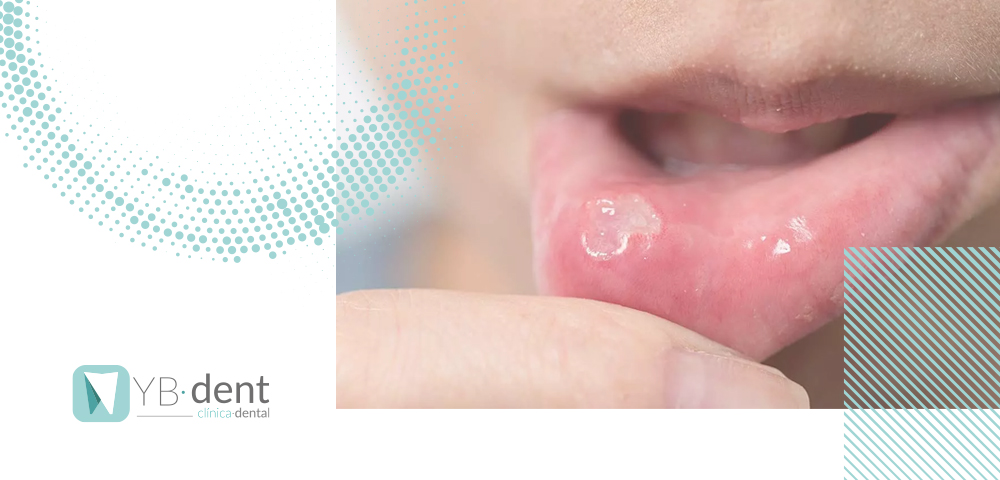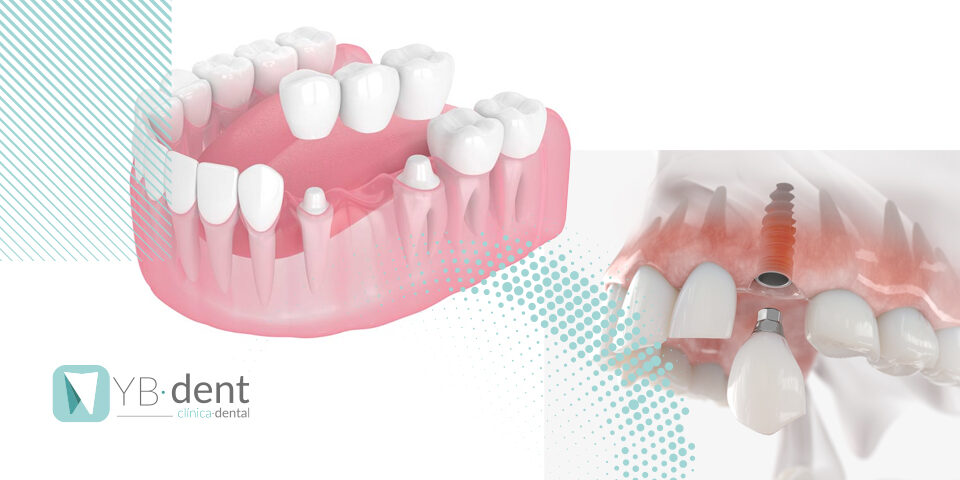Qué es la estomatitis y cómo tratarla

Seguro que cuando piensas en las patologías más comunes que tratamos en la Clínica Dental YB-dent las primeras son las caries, las ortodoncias… Pero en la clínica nos encontramos todos los días enfermedades mucho más comunes de lo que crees y que deben ser tratadas por profesionales en clínicas dentales.
Una de estas patologías, que es probable que hayas escuchado alguna vez en una consulta como diagnóstico es la estomatitis.
La estomatitis es una enfermedad muy común, cuyos síntomas son plausibles en nuestra boca en forma de llagas o aftas. Estas llagas o aftas bucales causan una infección localizada en nuestra boca.
Como decíamos al inicio, es un problema muy común que debe tratarse por un profesional ya que sus causas pueden ser un variadas y si las llagas bucales son persistentes, además de ser muy molestas, pueden causar deshidratación, problemas graves al comer, y si la infección se extiende y los problemas se alargan pueden ocasionar problemas dentales más graves.
¿Qué síntomas tiene la estomatitis?
Además de las llagas, la estomatitis se puede manifestar a través de otros síntomas:
- Si no sabes ponerle cara a las llagas o aftas bucales, son unas lesiones de color rojizo, o en algunos casos blanquecino, que aparecer alrededor de los dientes, en las encías o en la parte interior de nuestras mejillas. Se conocen por ser muy molestas y causar dolor al masticar, tragar o en algunos casos cuando algo las roza. Aunque es muy molesta, no es contagiosa.
- Dolor o picor, aunque no tengas la llaga es muy probable que si sientes dolor o un picor extraño al comer estemos hablando de la misma dolencia.
- Otra forma de manifestación de la estomatitis, es a través de la inflamación de nuestras encías o alguna parte de nuestra boca.
- Si la infección sigue proliferando y termina siendo más grave, puede ocasionar fiebre.
¿Qué ocasiona la estomatitis?
Como hemos comentado las llagas o aftas de nuestra boca que ocasionan la estomatitis se causan principalmente por una infección, pero esta infección es la derivación de otros problemas:
La estomatitis herpética
Más que un afta, este tipo de estomatitis causa úlceras que son el resultado de una infección del virus del herpes simple. Esta forma de estomatitis es muy común en niños y suele ser bastante contagiosa.
Estomatitis aftosa
Es cuando padecemos regularmente de aftas en la boca. Se desconoce el porqué de se padecen de forma tan común, pero llegados a este caso es importante visitar a un especialista para que estudie nuestro caso y pueda darnos el tratamiento personalizado a nuestro caso.
Mala nutrición
Una falta de nutrientes puede ser el desencadenante de numerosos problemas de aftas en nuestra boca.
Dentadura postiza
En los casos de prótesis dentales es muy importante ajustar adecuadamente la prótesis a nuestra boca, además de una correcta higiene para evitar estos problemas tan molestos.
Ortodoncias
Al igual que en la dentadura postiza, hasta que las ortodoncias, sobre todo los brackets, llegan a estar amoldados a nuestra boca se puede generar estas molestas llagas.
Tratamientos médicos
Uno de los efectos secundarios de la quimioterapia son la aparición de aftas en la boca.
¿Cómo se trata la estomatitis?
Lo más importante es visitar a tu especialista de confianza para primero averiguar la procedencia de las llagas y te recete un tratamiento adecuado a tu caso.
En la Clínica Dental YB-dent, además de estudiar tu caso y recetarte los medicamentos adecuados para tu caso te aconsejamos algunas pautas para reducir la molestia y acelerar la cicatrización:
- Correcta higiene bucal, para reducir al máximo la infección.
- Uso de enjuagues bucales.
- Ingerir muchos líquidos.
- Medicamentos para reducir el dolor y la infección.
- En caso de fiebre, se receta ibuprofeno o medicamentos similares.
En la Clínica Dental YB-dent, estamos a tu disposición ante cualquier duda de tus síntomas. Ten en cuenta que un diagnóstico temprano puede aliviar las molestias y evitar posibles problemas más graves.



